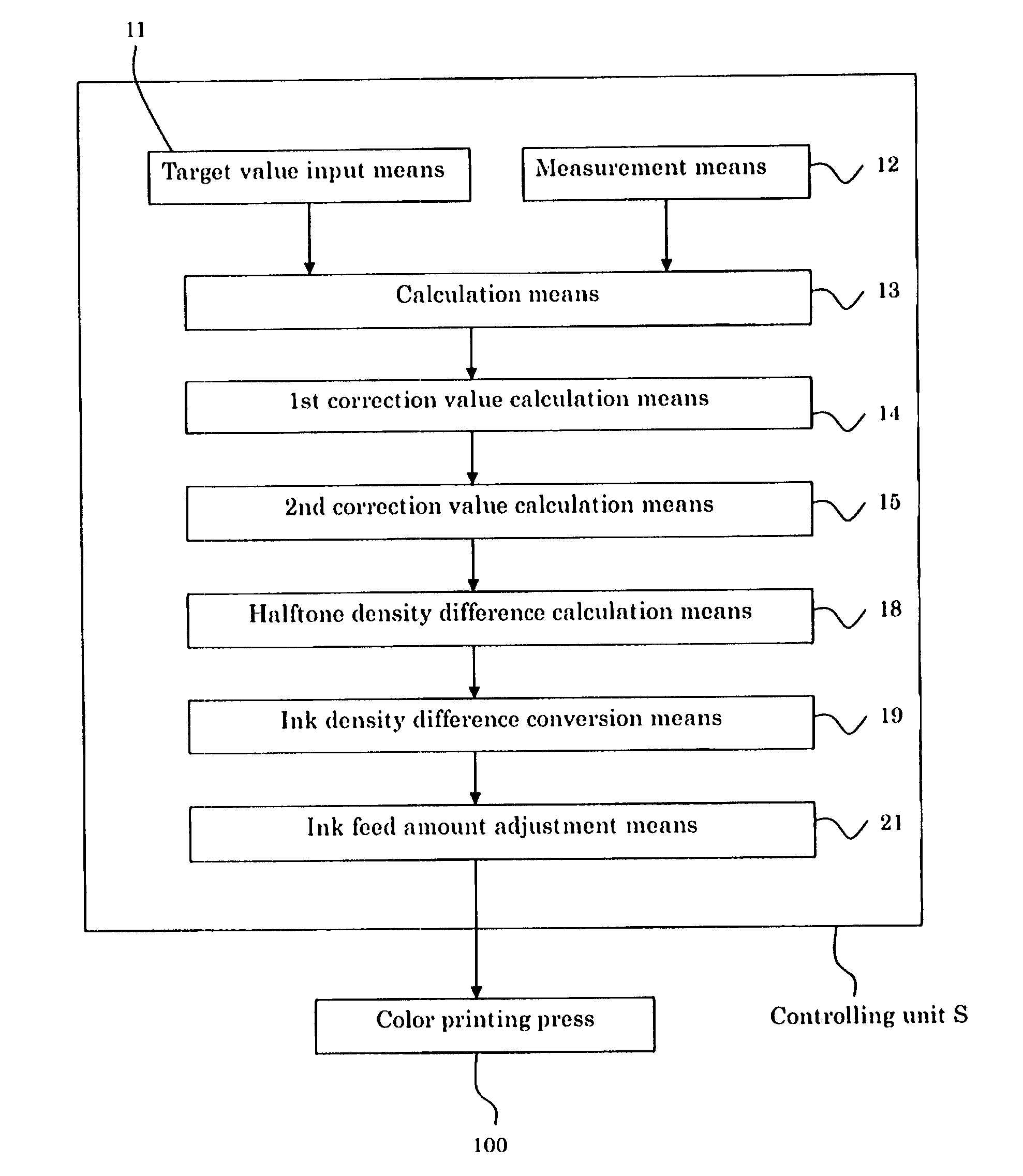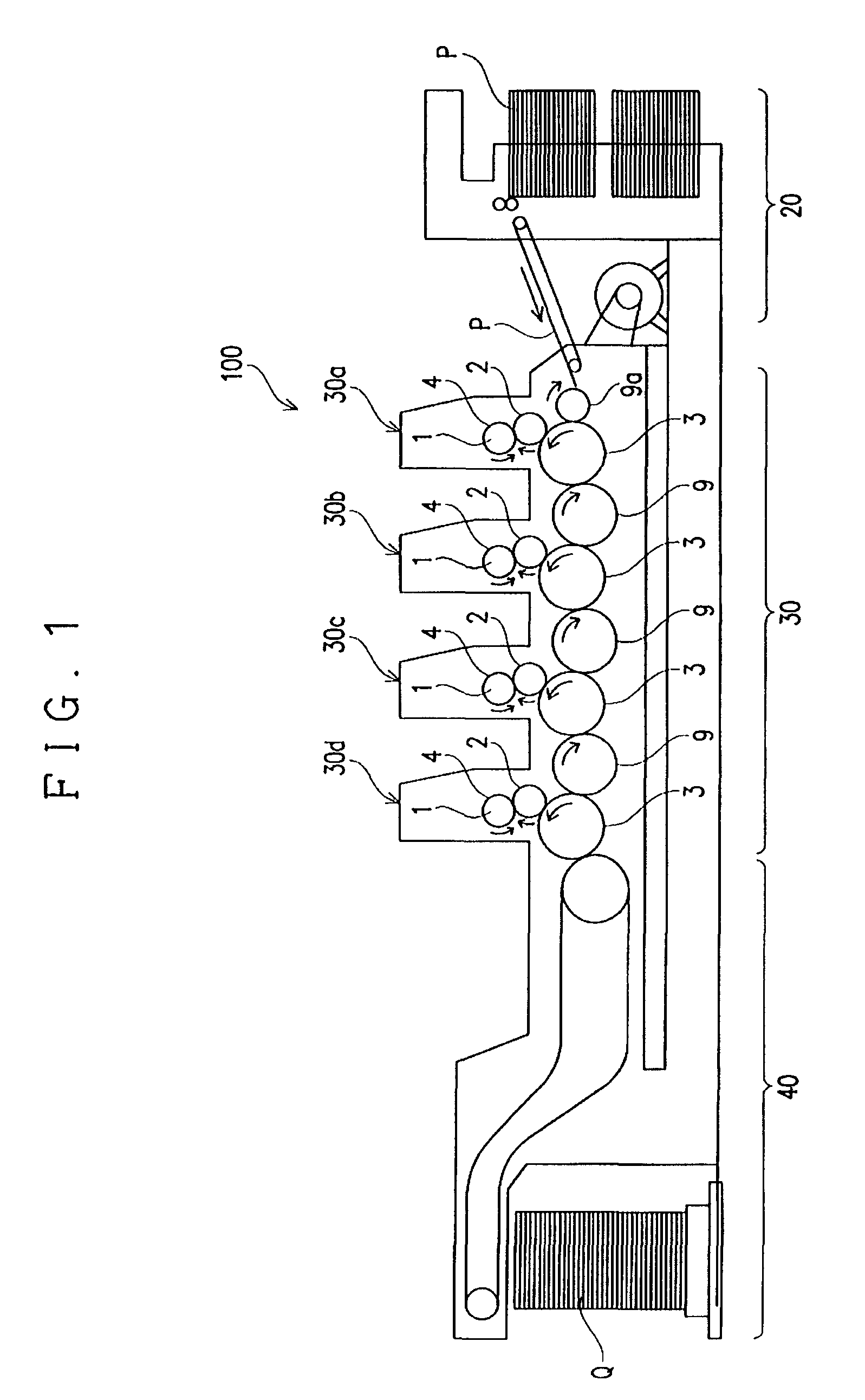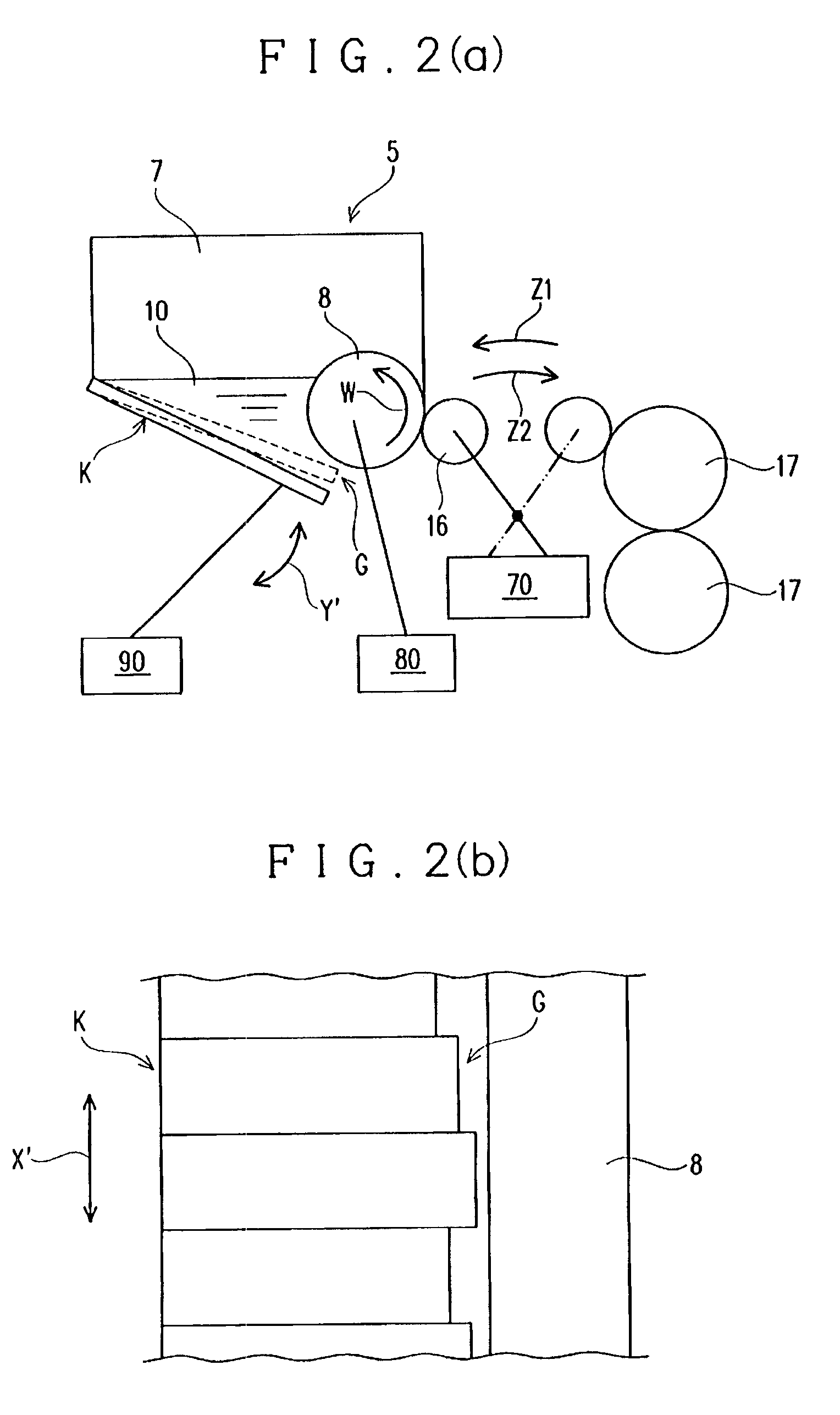Method and apparatus of controlling quality of printed image for color printing press
a color printing press and printing quality technology, applied in office printing, color measuring devices, printing, etc., can solve the problems of large degree, adverse changes in color that has been matched prior to printing, adverse changes in color, etc., and achieve accurate matching
- Summary
- Abstract
- Description
- Claims
- Application Information
AI Technical Summary
Benefits of technology
Problems solved by technology
Method used
Image
Examples
Embodiment Construction
[0026]The following describes an embodiment according to the present invention with reference to the drawings. FIG. 1 shows a schematic configuration of one example of a color printing press 100 in one example of a color printing system that realizes a method of controlling quality of a printed image for a color printing press according to the present invention. The color printing system is provided with a controlling unit S as shown in FIG. 3 that will be described later, in addition to the color printing press 100 as described above.
[0027]As shown in FIG. 1, the color printing press 100 prints images in basic colors of C, M, Y, and Bk that are formed by printing inks of a plurality of basic colors that are different from each other, which are the inks of four basic colors of Cyan (C), Magenta (M), Yellow (Y), and Black (Bk) in this specification, sequentially on a subject to be printed P (printing paper in this specification), thereby printing a color print image onto the subject ...
PUM
 Login to View More
Login to View More Abstract
Description
Claims
Application Information
 Login to View More
Login to View More - R&D
- Intellectual Property
- Life Sciences
- Materials
- Tech Scout
- Unparalleled Data Quality
- Higher Quality Content
- 60% Fewer Hallucinations
Browse by: Latest US Patents, China's latest patents, Technical Efficacy Thesaurus, Application Domain, Technology Topic, Popular Technical Reports.
© 2025 PatSnap. All rights reserved.Legal|Privacy policy|Modern Slavery Act Transparency Statement|Sitemap|About US| Contact US: help@patsnap.com



